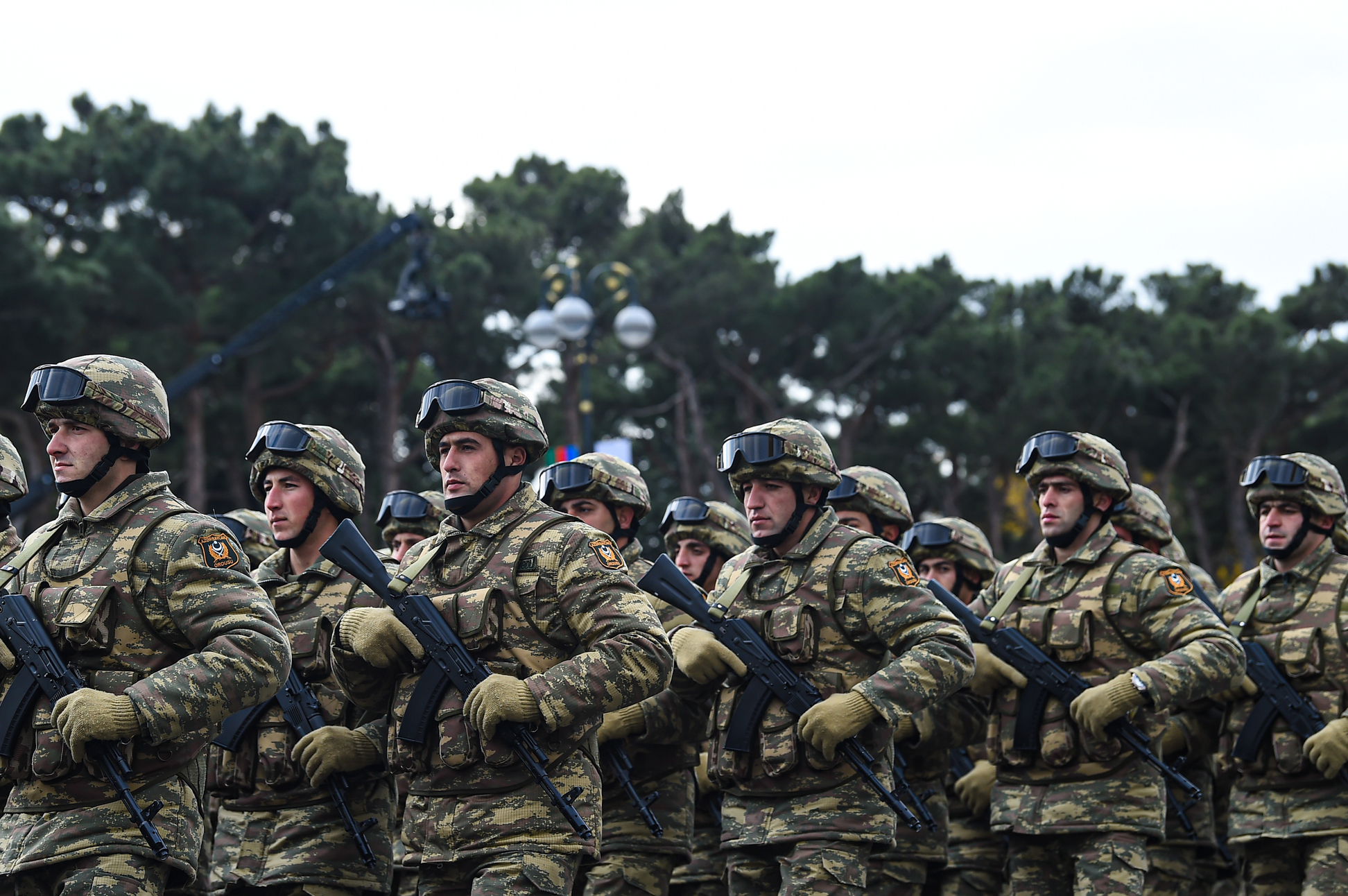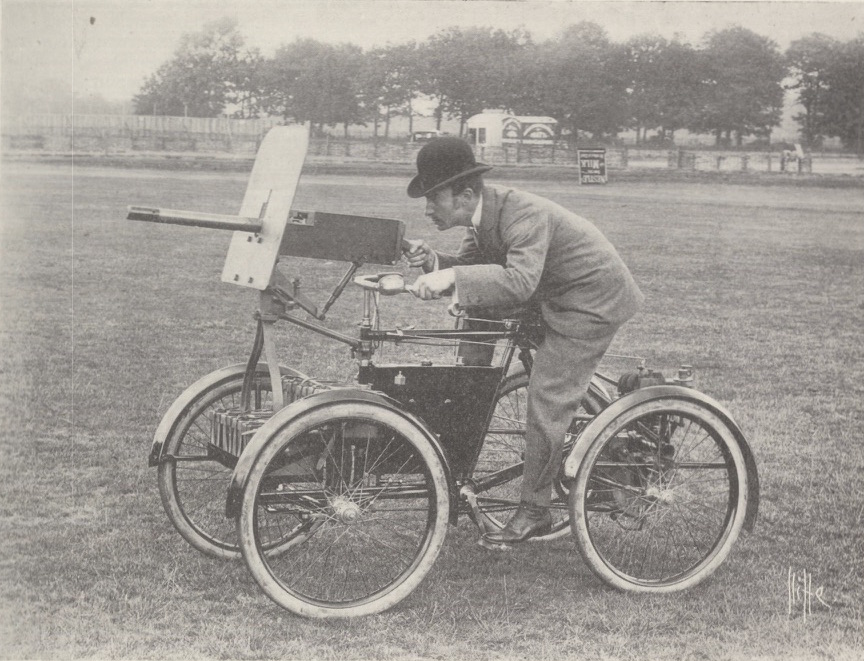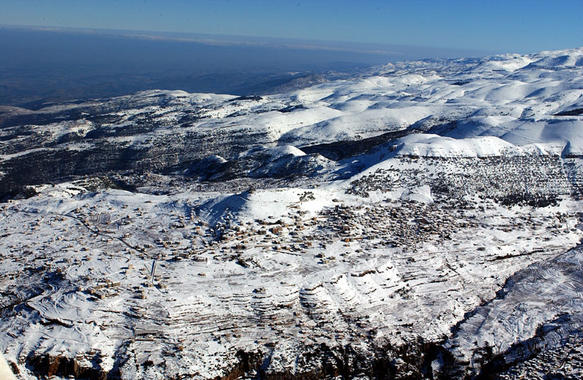|
4th Infantry Brigade (Lebanon)
The 4th Infantry Brigade (Lebanon) was a Lebanese Army unit that fought in the Lebanese Civil War, being active from its creation in January 1983 until its destruction in September that year, in the wake of the Mountain War. Origins In the aftermath of the June–September 1982 Israeli invasion of Lebanon, President Amin Gemayel, convinced that a strong and unified national defense force was a prerequisite to rebuilding the nation, announced plans to raise a 60,000-man army organized into twelve brigades (created from existing infantry regiments), trained and equipped by France and the United States. In late 1982, the 4th Infantry Regiment was therefore re-organized and expanded to a brigade group numbering 2,000 men, most of whom were Maronite Christians from the Mount Lebanon region and Druzes from the Chouf District, which became in January 1983 the 4th Infantry Brigade. Emblem Structure and organization The new unit grew from an understrength battalion comprising three rifl ... [...More Info...] [...Related Items...] OR: [Wikipedia] [Google] [Baidu] |
Ground Forces
An army, ground force or land force is an armed force that fights primarily on land. In the broadest sense, it is the land-based military branch, service branch or armed service of a nation or country. It may also include aviation assets by possessing an army aviation component. Within a national military force, the word army may also mean a field army. Definition In some countries, such as France and China, the term "army", especially in its plural form "armies", has the broader meaning of armed forces as a whole, while retaining the colloquial sense of land forces. To differentiate the colloquial army from the formal concept of military force, the term is qualified, for example in France the land force is called , meaning Land Army, and the air and space force is called , meaning Air and Space Army. The naval force, although not using the term "army", is also included in the broad sense of the term "armies" — thus the French Navy is an integral component of the collective ... [...More Info...] [...Related Items...] OR: [Wikipedia] [Google] [Baidu] |
Amin Gemayel
Amine Pierre Gemayel (, ; born 22 January 1942) is a Lebanese politician who served as the eighth president of Lebanon from 1982 to 1988. Gemayel was born in Bikfaya to Pierre Gemayel, the founder of the Christian Kataeb Party (also known as the "Phalanges"). He worked as a lawyer, then was elected as a deputy for Northern Metn in 1970 by-election, following the death of his uncle, Maurice Gemayel, and once again in the 1972 general election. At the start of the Lebanese Civil War, the Phalanges were a member of the Lebanese Front, allied with Syria against the leftist National Movement. However, Syria became their enemy, while they started receiving the support of Israel. This phase saw the rise of Amine's brother, Bachir, who had disputes with Amine about the military leadership, such as uniting the Christian militias by force. In 1982 Bachir was elected to presidency but was assassinated before taking office. Gemayel's election was endorsed by the United States and Isra ... [...More Info...] [...Related Items...] OR: [Wikipedia] [Google] [Baidu] |
Main Battle Tank
A main battle tank (MBT), also known as a battle tank or universal tank or simply tank,Ogorkiewicz 2018 p222 is a tank that fills the role of armour-protected direct fire and maneuver in many modern armies. Cold War-era development of more powerful engines, better suspension systems and lighter composite armour allowed for the design of a tank that had the firepower of a super-heavy tank, the armour protection of a heavy tank, and the mobility of a light tank, in a package with the weight of a medium tank. The first ''designated'' MBT was the British Chieftain (tank), Chieftain tank, which during its development in the 1950s was re-designed as an MBT. Throughout the 1960s and 1970s, the MBT replaced almost all other types of tanks, leaving only some specialist roles to be filled by lighter designs or other types of armoured fighting vehicles. Main battle tanks are a key component of modern armies.Main battle tank#House1984, House (1984), ''Toward Combined Arms Warfare: A Surve ... [...More Info...] [...Related Items...] OR: [Wikipedia] [Google] [Baidu] |
M48 Patton
The M48 Patton is an American first-generation main battle tank (MBT) introduced in February 1952, being designated as the 90mm Gun M48, armored, full-tracked, combat vehicle of the medium-gun tank class. It was designed as a replacement for the , M4 Sherman, M46 and M47 Patton tanks, and was the main battle tank of the and U.S. Marine Corps in the Vietnam War. Nearly 12,000 M48s were built, mainly by Chrysler and American Locomotive Company, from 1952 to 1961. The M48 Patton was the first U.S. medium gun tank with a four-man crew, featuring a centerline driver's compartment and no bow machine gunner. As with nearly all new armored vehicles it had a wide variety of suspension systems, cupola styles, power packs, fenders and other details among individual tanks. The early designs, up to the M48A2C, were powered by a gasoline engine. The M48A3 and A5 versions used a diesel engine. However, gasoline engine versions were still in use in the US Army National Guard through 196 ... [...More Info...] [...Related Items...] OR: [Wikipedia] [Google] [Baidu] |
Light Tanks
A light tank is a tank variant initially designed for rapid movements in and out of combat, to outmaneuver heavier tanks. It is smaller with thinner armor and a less powerful main gun, tailored for better tactical mobility and ease of transport and logistics. They are primarily employed in the screening, armored reconnaissance, skirmishing, artillery observation, and supplementing landing operations in a fire support role of expeditionary forces where larger, heavier tanks are unavailable or have difficulties operating safely or efficiently. The fast light tank was a major feature of the pre–World War II army buildup, where it was expected they would be used to exploit breakthroughs in enemy lines created by slower, heavier tanks, with the goal of disrupting communications and supply lines. Numerous small tank designs and "tankettes" were developed during this period and known under a variety of names, including the " combat car". Early light tank designs were generall ... [...More Info...] [...Related Items...] OR: [Wikipedia] [Google] [Baidu] |
AMX-13
The AMX-13 is a French light tank produced from 1952 to 1987. It served with the French Army, as the Char 13t-75 Modèle 51, and was exported to more than 26 other nations. Named after its initial weight of 13 tonnes, and featuring a tough and reliable chassis,''The Complete Guide to Tanks and Armoured Fighting Vehicles'', it was fitted with an oscillating turret built by GIAT Industries (now Nexter) with revolver-type magazines, which were also used on the Austrian SK-105 Kürassier. Including prototypes and export versions, over a hundred variants exist, including self-propelled guns, anti-aircraft systems, Armoured personnel carrier, APCs, and ATGM versions. Development The tank was designed at the Ateliers de construction d'Issy-les-Moulineaux, Atelier de Construction d'Issy-les-Moulineaux (AMX) in 1946 to meet a requirement for an air-portable vehicle to support paratroopers. The prototype ran from 1948. The compact chassis had torsion bar suspension with five road wheels a ... [...More Info...] [...Related Items...] OR: [Wikipedia] [Google] [Baidu] |
Armored Car (military)
A military armored (Commonwealth English, also spelled armoured) car is a wheeled armoured fighting vehicle, historically employed for reconnaissance, internal security, armed escort, and other subordinate battlefield tasks. With the gradual decline of mounted cavalry, armored cars were developed for carrying out duties formerly assigned to light cavalry. Following the invention of the tank, the armoured car remained popular due to its faster speed, comparatively simple maintenance and low production cost. It also found favor with several Colonial troops, colonial armies as a cheaper weapon for use in underdeveloped regions. During World War II, most armoured cars were engineered for reconnaissance and passive observation, while others were devoted to communications tasks. Some equipped with heavier armament could even substitute for tracked combat vehicles in favorable conditions—such as pursuit or flanking maneuvers during the North African campaign. Since World War II t ... [...More Info...] [...Related Items...] OR: [Wikipedia] [Google] [Baidu] |
Panhard AML
The Panhard AML (''automitrailleuse légère'', or "light armoured car") is an armoured car with reconnaissance capability. Designed by Panhard on a lightly armoured 4×4 chassis, it weighs an estimated 5.5 tonnes, and is thus suitable for airborne deployment. Since 1959, AMLs have been marketed on up to five continents; several variants remained in continuous production for half a century. These have been operated by fifty-four national governments and other entities worldwide, seeing regular combat. The AML-245 was once regarded as one of the most heavily armed scout vehicles in service, fitted with a low velocity DEFA D921 90 mm (3.54 in) rifled cannon firing conventional high explosive and high explosive anti-tank shells, or a 60 mm (2.36 in) breech loading mortar with 53 rounds and dual 7.5mm MAS AA-52 NF-1 machine guns with 3,800 rounds, all mounted coaxially in the turret. An AML is capable of destroying targets at 1,500 meters with its D921 main gun. ... [...More Info...] [...Related Items...] OR: [Wikipedia] [Google] [Baidu] |
T17 (armored Car)
The T17E1 armored car was an American armored car manufactured during the Second World War. It saw service with British and other Commonwealth forces during the war under the name Staghound, but was never used on the front line by US forces. A number of other countries used the Staghound after the war; some vehicles continued to serve until the 1980s. History In July 1941, the U.S. Army Ordnance issued specifications for a medium armored car alongside a specification for heavy armored car (which resulted in the T18 Boarhound). Ford Motor Company built a six wheels, all driven (6 x 6) prototype which was designated T17 and Chevrolet a four wheels, all driven (4 x 4) model designated T17E1. At the same time, the British Purchasing Commission was also looking for medium and heavy armored cars for use in the war in North Africa. Had the U.S. adopted this, it would have been called the M6. Both the T17 and T17E used the same turret which was designed by Rock Island Arsenal wi ... [...More Info...] [...Related Items...] OR: [Wikipedia] [Google] [Baidu] |
Chouf District
Chouf (also spelled Shouf, Shuf or Chuf; ) is a historic region of Lebanon, as well as an administrative district in the governorate ( muhafazat) of Mount Lebanon. Geography Located south-east of Beirut, the region comprises a narrow coastal strip notable for the Christian town of Damour, and the valleys and mountains of the western slopes of Jabal Barouk, the name of the local Mount Lebanon massif, on which the largest forest of Cedars of Lebanon is found. The mountains are high enough to receive snow. History The Emirs of Mount Lebanon resided in Chouf, most notably Druze Emir Fakhr al-Din II, who attained considerable power and autonomy from the Ottoman Empire in the 17th century. He is often referred to as the founder of modern Lebanon although his area of influence and control included parts of Palestine and Syria. Another emir is Bachir Chehab II, who built the palace of Beiteddine during the first half of the 19th century. Deir al Qamar (the monastery of the ... [...More Info...] [...Related Items...] OR: [Wikipedia] [Google] [Baidu] |
Druze In Lebanon
The Lebanese Druze () are an ethnoreligious group constituting about 5.2 percentLebanon 2015 International Religious Freedom Report U.S. Department of State. Retrieved on 2019-04-23. of the population of . They follow the faith, which is an [...More Info...] [...Related Items...] OR: [Wikipedia] [Google] [Baidu] |
Mount Lebanon
Mount Lebanon (, ; , ; ) is a mountain range in Lebanon. It is about long and averages above in elevation, with its peak at . The range provides a typical alpine climate year-round. Mount Lebanon is well-known for its snow-covered mountains, home to surviving Cedrus libani, Lebanese cedar forests and diverse high-altitude flora and fauna. The name Lebanon itself originates from the white, snow-covered tops of this mountain range. Geography The Mount Lebanon range extends along the entire country for about , parallel to the Mediterranean Sea, Mediterranean coast. The highest peak is Qurnat as Sawda', at . The range receives a substantial amount of precipitation, including snow, which averages around in depth.Jin and Krothe. ''Hydrogeology: Proceedings of the 30th International Geological Congress'', p. 170 Lebanon has historically been defined by the mountains, which provided protection for the local population. In Lebanon, changes in scenery are related less to geographical ... [...More Info...] [...Related Items...] OR: [Wikipedia] [Google] [Baidu] |









